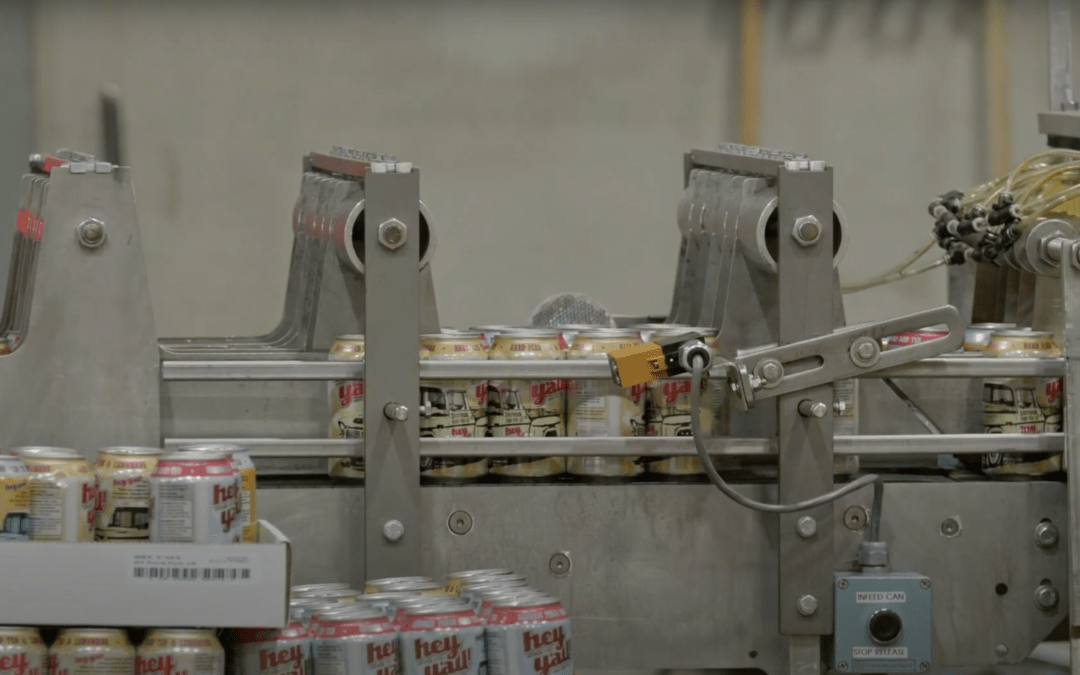In the beverage market, standing out on packed store shelves is crucial. Packaging isn’t just about looks; it’s about preserving a brand’s reputation. Read on to discover some insights into the bustling industry of beverage production and the science behind the look, supply, and distribution of thirst-quenchers before they hit your local liquor marts and grocery aisles.
Understanding Co-packing vs Repacking in the Beverage Industry
Contract Packaging or “co-packing” for short, is when one company brews or blends, fills, and packages products on behalf of another group or established brand. Co-packing in this sense often relates back to the production side of the equation, allowing an established brand the ability to produce product locally within a market location, where they do not have an established production infrastructure of their own.
There are several reasons as to why this would make sense to a national brand, from adding additional seasonal production capacity for an inventory build, to reducing transportation lead times and supply chain costs. By producing the product within the region where the demand exists, as opposed to shipping it in (often over great distances), significant cost savings can be realized without significant investments in production infrastructure.
On the flip side, Repacking is mainly centered around the presentation of the established brands’ product in the market. This may include changes to the packaging format based on sales in a specific market (6 pack vs 12 pack vs 24 pack – some markets just have their own regional preferences), or recouping carton damage during shipping or handling. Often, the drive for repackaging services centers around generating “variety packs” that allow the consumer to sample and share the entire product line with the purchase of a single carton.
With the boom of the RTD (ready-to-drink)/Seltzer market over the past several years, new brands are launching monthly. Producers want to get their beverages into the hands of consumers to generate buzz around their name, and offering a variety pack format is a great way to accomplish that goal. Due to the nature of production equipment, most co-packers or producers are not set up to generate mixed, finished packages off the production line directly, so utilizing a third-party provider to accomplish this task is often the most cost-efficient solution to generate these assorted pack types.
Think of it like this: one company makes a tasty drink, while running certain flavours in a bulk run. Then, with co-packing, we create a variety pack that takes the bulk pallets of one particular flavour and mixes it with other flavours, creating an enticing bundle of options for the consumer.
Why are Co-packing and Repacking Crucial?
Brand Image:
In an industry where brand identification is critical for success due to highly saturated markets, adding a new flavor to the mix or providing options for the end consumer is a fantastic way to increase sales and keep customers coming back for your product.
Efficiency:
Re-packing, when done at a different location from the original production facility, leads to improved efficiencies for the producer. When doing a run, it helps the producer focus on one flavor and produce as much of it as possible, without needing to “stop the presses” and switch to a different flavor mid-run. By producing individual flavors in bulk and having it re-packed into variety packs, it ensures valuable line time at the bottler is maintained to the highest throughput of product.
Economic Considerations:
Efficient re-packing processes can lead to improved cost savings. For instance, using hot melt glue sticks for re-packing is often faster and more cost-effective than other methods. It’s also nice to keep the environmental footprint in check by reducing waste and ensuring products don’t go unsold due to packaging issues on the line.
The Global Perspective
A LinkedIn report suggests exciting developments in the “3PL, Co-packing, and Re-packing for Beverages Market”. Expectations include seeing substantial growth in the next few years, thanks to the increasing popularity of both alcoholic and non-alcoholic drinks. From 2023 to 2030, the market is set to expand at an impressive rate, highlighting the crucial role of effective co-packing and re-packing. This growth isn’t just numbers—it’s a reflection of the industry’s ability to adapt and thrive!
Innovation in Re-packing
In many beverage facilities, using automated lines and hot melt adhesives is the norm. However, re-packing typically demands a more personalized touch. Professionals often use hot melt glue sticks with high-grade glue guns because of their reliability and effectiveness. These sticks create a durable bond to secure cases and cartons to allow for easy access. Embracing ongoing innovation is key to future advancements in this area.
How Do We Fit into the Equation?
Stryder Motorfreight Canada, with our child company Logic-ology, provides a fluid experience to the beverage industry. Our strategically located Repacking centers near vital transit routes in Vancouver and Calgary offer seamless shipping, storage, and receiving for our valued clients.
With cutting-edge production capabilities, our advanced equipment ensures swift output, precision, and top-tier quality control. Stryder’s all-inclusive beverage repackaging services include variety packs, automated and manual repacking, diverse packaging formats, specialized promotional options, real-time inventory management, warehousing, transportation, and more!
Conclusion
In the world of drinks, how they are packaged and presented matters. Co-packing and re-packing help to make sure our drinks get to us looking and tasting great, so if you’re hunting for a company to make it happen for your business, look to us to turn your beverage supply chain stresses into a breeze.
The next time you enjoy a drink, remember there’s a lot of effort being made behind the scenes to ensure that every sip is just perfect!
Learn more about our beverage re-packing capabilities.


Recent Comments